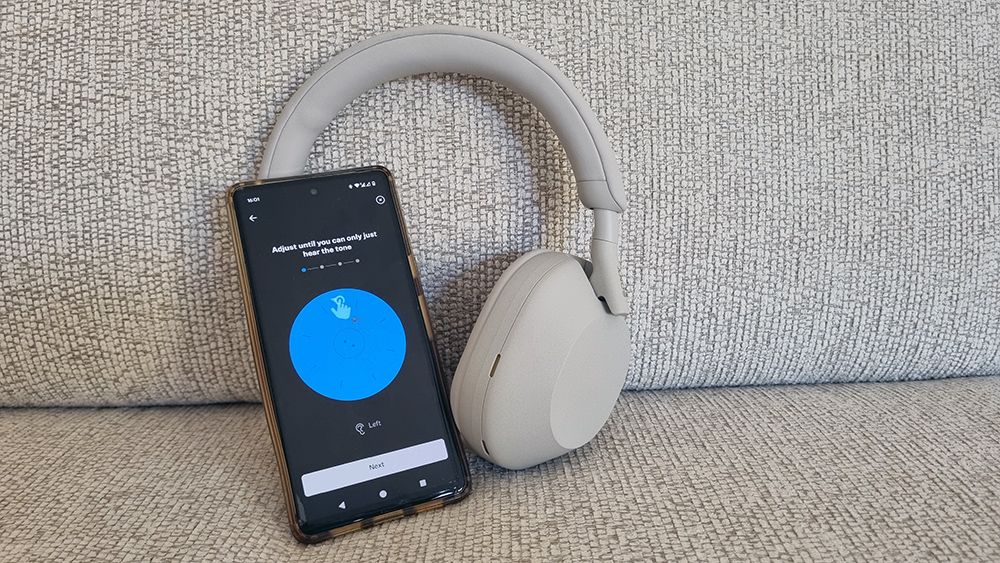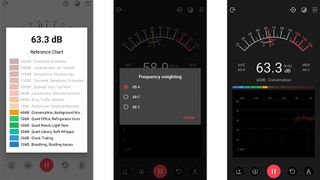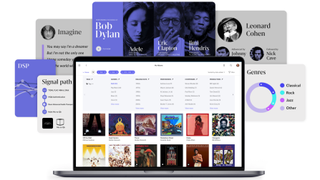6 free audiophile apps to supercharge your hi-fi experience
Plus the best music management app out there (which isn't free)

Unless you’re an analogue die-hard, it’s almost inevitable you’ll have a number of music apps at your daily disposable, likely a streaming service like Tidal and/or the dedicated app that accompanies your streamer or other streaming-savvy hi-fi component. After all, phone and tablet control has become increasingly popular in recent years, to the point whereby, wrongly or rightly, many networked products nowadays don’t even bundle a physical remote.
In this Apple (who else?)-coined “there's an app for that” era, it probably won’t surprise you to read that all kinds of music-playing apps exist, as do other utility and audio apps that can be helpful for hi-fi scenarios. And many of them are free. Below we have listed seven the What Hi-Fi? team find come in handy now and again…
Bubble Level
If you are setting up a turntable, it’s imperative to ensure it is sitting dead-level on a surface, which may not be the case if your record player or the equipment rack it is sitting on has adjustable feet. You may have a spirit/bubble level tool to hand that will help, but if you can’t remember where you put it after installing that shelf in the living room, or simply had to return it to your neighbour, a spirit level app could save you a trip to the hardware store.
Bubble Level (which currently has a 4.7/5 user review rating on the Google Play Store and Apple App Store) is one such app, and was a useful rescue aid recently when our reviews team had misplaced our physical tool (it happens!). Simply open the app, put your phone flat on the turntable platter (screen upward-facing) and use the three green-on-black levels to measure any tilt – naturally, you want the Y and X axis to measure 0.0 degrees. Just be aware that any protruding rear-panel camera notches on the phone will affect the measuring accuracy. You have to put up with ads, but hey, it is free. Note that this will only work for rigid deck designs, not those of the sprung variety, as the phone's weight would then affect the results.
Bubble UPnP / MConnect
At the heart of most networked components (those that can stream music over the internet) is a software platform and companion control app, whether it’s developed by the product’s brand itself (like Cambridge Audio’s StreamMagic) or a third-party company (like DTS Play-Fi). The app is often a gateway to streaming services, such as Tidal and Qobuz, and allows you to access music stored on your network, perhaps on a NAS drive, via DLNA / UPnP. Not every networked component comes with an app, though – the Sonus Faber Omnia wireless speaker and Q Acoustics Q Active 200 speaker system are two such examples, with some brands not having the wealth of resources required to maintain an app themselves and choosing not to pay a license fee for a third-party platform. That’s where free DLNA / UPnP apps such as BubbleUPnP (for Android devices) and MConnect (for Apple and Android devices) come in. We tend to use these when our reviews team comes across an app-less product, but others are available.
Within them you can browse your local (on-device) and available networked (cloud-stored) music libraries, and simply select your UPnP-compatible streamer or speaker as the ‘renderer’ (output device). They allow you to cast music over Google Chromecast too, and access Tidal and Qobuz. You can create playlists as well, although don’t expect overly sophisticated interfaces with grid and album artwork browsing – they are more functional than fancy.
Sennheiser Hearing Test
This does-what-it-says-on-the-tin app has been created by Sennheiser and tests your hearing. Anyone can perform this free test, which doesn’t require you to register or sign up for anything – all you need is a pair of headphones (any will do; you specify their kind in the set-up) and a quiet environment. Following a handful of questions about your hearing and headphones, the app plays a series of test tones and can simply identify when you start hearing them. It’s simple and takes only a few minutes from start to finish.
Get the What Hi-Fi? Newsletter
The latest hi-fi, home cinema and tech news, reviews, buying advice and deals, direct to your inbox.
The results provide you with an audiogram that shows you how loud sounds need to be for you to hear them, plus a written summary of what category you fall into (‘Normal’ to ‘Severe’) and what that means. We’re happy to report that the three What Hi-Fi? review team members who have taken it fall within the ‘Normal’ range!
SPL Meter

Apps that can record sound pressure levels, such as SPL Meter and iOS-only NIOSH Sound Level Meter, have several uses in hi-fi and home cinema applications. They can be useful when comparing speakers, as differing sensitivities may mean that you might have to turn the volume control to compensate for any level shifts due to that sensitivity difference. Our reviews team does just this when performing highly critical comparisons between two products, such as the ProAc D20R vs Spendor A7 speakers and Rega Aethos vs Cyrus 40 AMP, to give two examples. Another use case is when you want to adjust the speaker/subwoofer levels to achieve channel balance during a home cinema set-up. Of course, this type of app can be used simply to check you aren’t encroaching into neighbour-bothering volume levels during listening sessions.
Just bear in mind that readings are only going to be as accurate as the microphone built into your phone or tablet, so unless you’re looking to do one-off or casual measurements, we would recommend investing – or borrowing – a more sophisticated microphone to plug in (as we naturally did when setting up our reference test rooms).
Seismometer
If you’re wondering how effective your system’s isolation support is, are looking to compare two isolation methods, or are indeed curious to find out whether you should invest in one in the first place, a seismometer app (such as Vibration Meter for Android or Hamm Seismograph for iOS) will help detect how much vibration is being transferred from your floor to your kit. Simply place your phone or tablet on top of your speakers or turntable plinth, start recording in the app, and walk around the room or foot tap in your listening position.
Fing
A bit of a left-field inclusion here, Fing is a network scanning app that shows what devices are currently using your network. It’s not only good for seeing if your neighbours are piggybacking your wi-fi – and blocking them if they are! – but also allows you to identify what devices you could temporarily turn on if you’re having buffering problems while streaming music or video. It’s a nifty tool for homes with several networked components, although the most useful features (including the two aforementioned ones) are now stuck behind a $70/year Premium tier paywall. You can also run speed tests and check how secure your network is.
And a bonus extra... Roon

(OK, so this one's not free, but we couldn't leave it out.)
You will likely have heard of Roon, which has fast become one of the most popular and sophisticated music library apps and is now owned by Harman International. We have a Roon explainer detailing all the ins and outs of the platform, but in a nutshell it’s a godsend for those who have multiple networked sources (and perhaps devices from various brands) in their home and are looking for one intuitive, well-organised, data-rich and beautifully laid out place from which to control, stream and browse their music.
As something to behold and use it’s a step up over most of the hi-fi brand companion apps, and it has extra advantages that range from performance-first software to an ARC mobile app that lets you listen to your entire Roon library of tracks on your phone. This luxury doesn’t come cheap, though – Roon is $12.49 per month, which for many essentially doubles their monthly streaming costs.
MORE:
Hi-res music streaming services compared: is Tidal, Qobuz, Amazon or Apple Music better?
How to build the perfect hi-fi system
Now Playing: 6 songs we've been listening to in the What Hi-Fi? test rooms
Becky is the managing editor of What Hi-Fi? and, since her recent move to Melbourne, also the editor of the brand's sister magazines Down Under – Australian Hi-Fi and Audio Esoterica. During her 11+ years in the hi-fi industry, she has reviewed all manner of audio gear, from budget amplifiers to high-end speakers, and particularly specialises in headphones and head-fi devices. In her spare time, Becky can often be found running, watching Liverpool FC and horror movies, and hunting for gluten-free cake.
